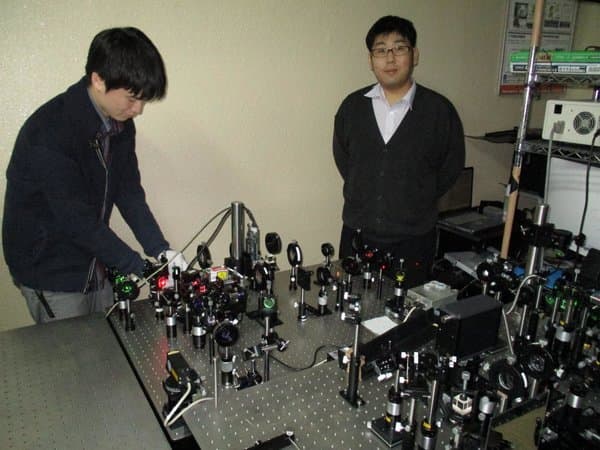Researchers Develop 3D Holographic Displays Using Nano-Magnetic Pixels
Science and innovation does not demand a full proof ultimatum, but rather it welcomes every better version to suitably replace the older concept. While the current generation is incapable of quenching it's thirst without getting access to sleek and curved smart 3D viewing systems, doctors and researchers from all around the globe are blaming conventional three dimensional displays with glasses and glass-free autostereoscopic displays for recent eye straining issues. However, a research group from the Toyohashi Institute of Technology has claimed to have found a solution to fix such problems with the help of their research product, a holographic display.
Contemporary 3D displays force one eye to view an image, that is different from the other eye which allows the brain to achieve a 3D vision. The complete system is dependent on a quick frame shifting and the brain’s response to the action. On the other hand, a holographic display generates a clone of the wavefront from the scattered light, due to the presence of the target object in a certain orientation. This process develops realistic 3D images, which are the requirement in this case, without needing any additional tools such as 3D glasses.

Associate Professor, Hiroyuki Takagi with his research project
Talking about its structural complexity, the construction of a holographic display includes nano-sized pixels to reconstruct the 3D image from “broken†information. Unlike current 3D displays, which sport a viewing angle greater than 3 degrees and manages a pixel-pitch of 10-100 µm, holographic screens feature a wide-angle display consisting of nano-sized pixels. Powered by thermomagnetic recordings, these pixels indirectly help to engineer the screens which are made up of magneto-optic spatial light modulators (MOSLMs).
One of the lead researchers, Professor Takagi explained that the approach has several advantages such as the absence of any special current or voltage drivelines and an efficient 10 nsec/pixel switching speed, with a rewritable magnetic display material. This approach gives a better adjustable pixel pitch, which in case of the laboratory experiment was fixed to 1 μm. This adjustment allows one to view a holographic image at viewing angles greater than 30 degrees, without optical aberration. The complete research was published in the Applied Physics Letters journal.
Source: #-Link-Snipped-#
Contemporary 3D displays force one eye to view an image, that is different from the other eye which allows the brain to achieve a 3D vision. The complete system is dependent on a quick frame shifting and the brain’s response to the action. On the other hand, a holographic display generates a clone of the wavefront from the scattered light, due to the presence of the target object in a certain orientation. This process develops realistic 3D images, which are the requirement in this case, without needing any additional tools such as 3D glasses.

Associate Professor, Hiroyuki Takagi with his research project
One of the lead researchers, Professor Takagi explained that the approach has several advantages such as the absence of any special current or voltage drivelines and an efficient 10 nsec/pixel switching speed, with a rewritable magnetic display material. This approach gives a better adjustable pixel pitch, which in case of the laboratory experiment was fixed to 1 μm. This adjustment allows one to view a holographic image at viewing angles greater than 30 degrees, without optical aberration. The complete research was published in the Applied Physics Letters journal.
Source: #-Link-Snipped-#
Replies
You are reading an archived discussion.
Related Posts
Apple once again wooed people with the launch of a new, impressive, updated MacBook on Tuesday 19 April, 2016. It's the thinnest and lightest Mac ever made, possessing latest processor...
In what could prove to be a new breakthrough in prosthetic and robotic field, scientists have successfully synthesized a super stretchy polymer which stretches about hundred times its length and...
ZTE’s sister brand Nubia has unveiled the Nubia Z11 Mini in the Chinese market today. The ZTE Nubia Z11 Mini as you might expect is the cheaper variant of the...
Micromax's latest flagship phone - Canvas 6 Pro - that was announced last week at the company's brand overhaul event in Delhi, is up for pre-orders now and the company...
The need for stronger cybersecurity is ever increasing. Indian IT body NASSCOM has claimed that by 2025, this is an area that shall globally become a $350 million industry, with...
